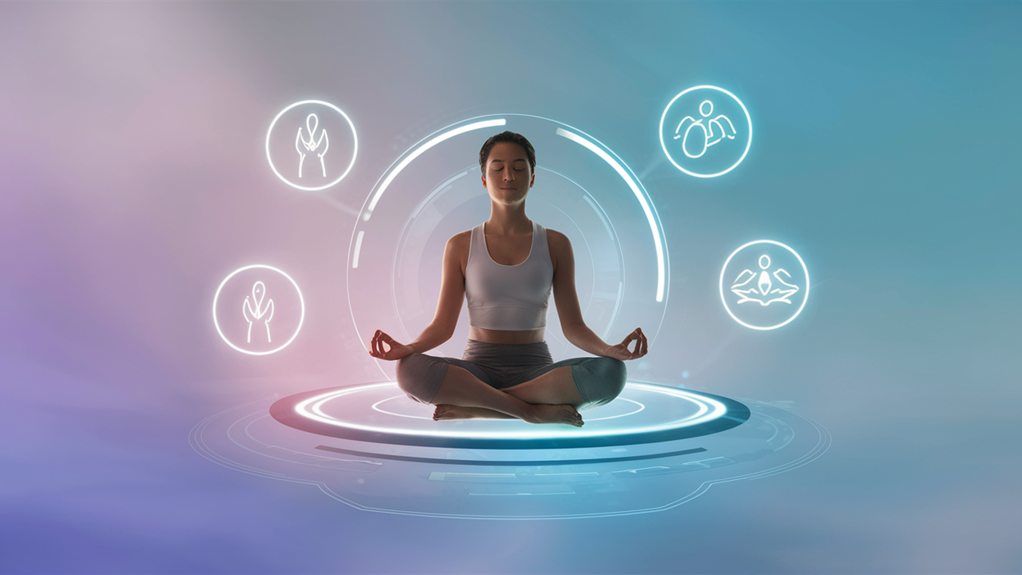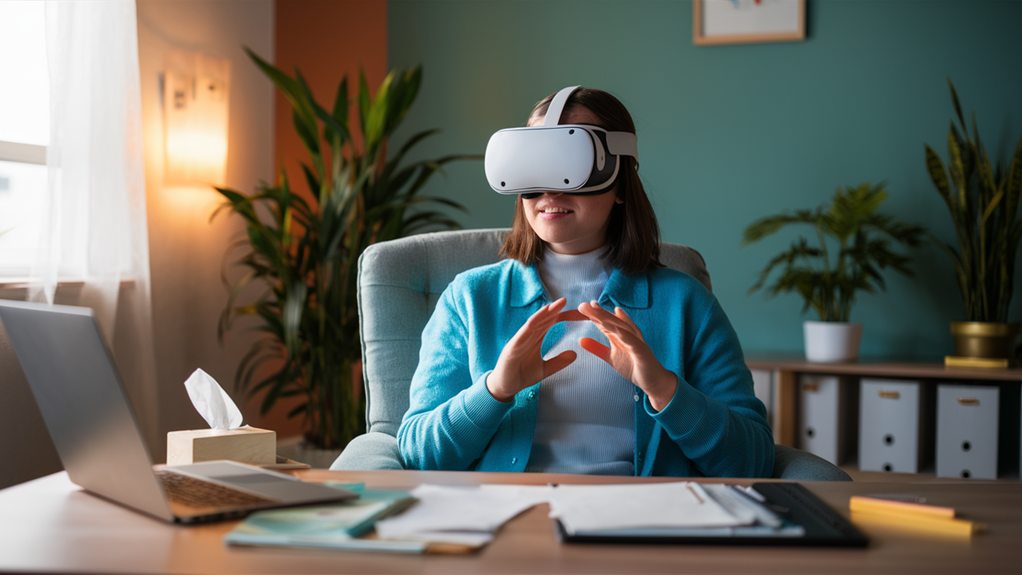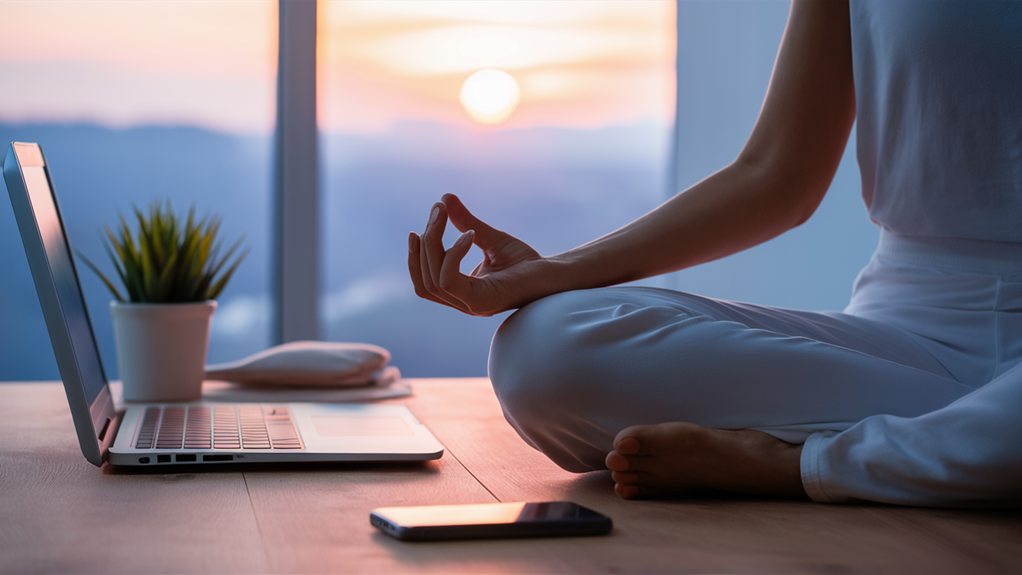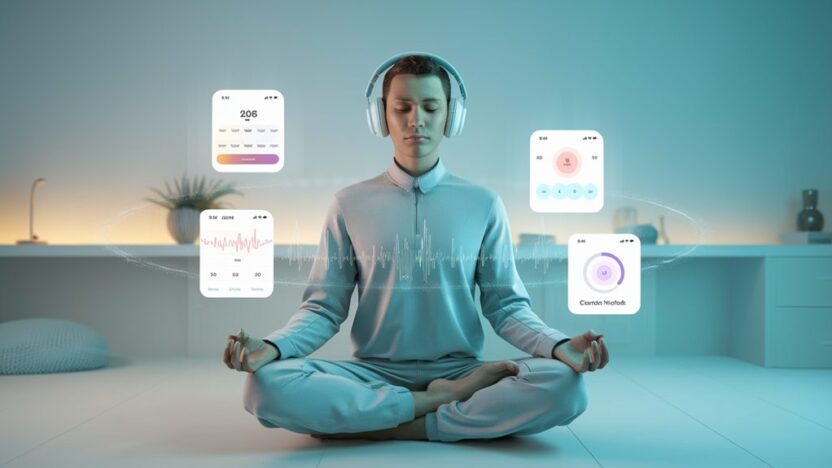Technology can be both a source of anxiety and a powerful tool for managing it. You'll find numerous digital solutions, from mindfulness apps that guide you through meditation and breathing exercises to virtual therapy platforms that connect you with licensed professionals. Wearable devices can track your stress levels in real-time, while customizable mental health apps help you monitor moods and develop coping strategies. However, it's important to balance these digital tools with screen-free time and traditional self-care practices. By establishing healthy tech habits, like setting clear boundaries and taking regular digital breaks, you'll discover the sweet spot between technology's benefits and your mental well-being.
Digital Tools for Mental Wellness

How can technology help manage anxiety in our increasingly digital world? You'll find an impressive array of digital tools designed specifically to support your mental wellness journey, making it easier than ever to access help when you need it most.
Incorporating mindfulness techniques into your daily routine is now possible with various apps that guide you through meditation and present-moment awareness strategies. Mental health apps for anxiety have revolutionized the way you can manage daily stress, offering everything from guided meditation sessions to mood tracking features that help you understand your anxiety patterns.
When you're feeling overwhelmed, these apps can provide instant calming exercises and breathing techniques right at your fingertips.
Digital therapy for anxiety has made professional help more accessible, allowing you to connect with licensed therapists through secure video calls or messaging platforms. You'll appreciate the convenience of getting support from the comfort of your home, especially during times when leaving the house feels challenging.
Tech solutions for anxiety now include wearable devices that monitor your heart rate and stress levels, smart home devices that create calming environments, and virtual reality programs that help you practice anxiety-management techniques.
You can customize these tools to fit your specific needs, creating a personalized approach to anxiety management.
Mindfulness Apps in Daily Life
Through consistent practice with mindfulness apps, you can transform ordinary moments into opportunities for mental clarity and emotional balance. These tools are particularly effective in helping to boost emotional resilience by regulating your emotions and reducing impulsivity.
Whether you're waiting in line, commuting to work, or taking a lunch break, these anxiety management technology tools can help you stay centered and focused throughout your day.
Modern mindfulness apps offer guided meditations, breathing exercises, and stress-relief techniques that you'll find easy to incorporate into your daily routine. You'll discover features like movement tracking, which helps you become aware of fidgeting patterns, and customizable meditation timers that fit your schedule.
Many apps also include progress tracking, letting you monitor your journey toward better emotional well-being.
To make the most of these digital tools, you'll want to set regular reminders and create a dedicated space for practice. Start with short, five-minute sessions and gradually increase the duration as you become more comfortable.
The beauty of mindfulness apps lies in their flexibility, allowing you to practice anywhere, anytime, while providing structured support for your mental health journey.
Virtual Therapy Benefits and Limitations

Virtual therapy's rise in popularity has revolutionized mental health care access, offering both significant advantages and notable drawbacks.
You'll find that connecting with a therapist from your home's comfort can reduce anxiety, save travel time, and help you maintain consistency in your mental health journey. When you're feeling overwhelmed, you can often schedule appointments more quickly than with traditional therapy, and you'll typically have more flexible timing options to fit your busy schedule.
However, you should consider some important limitations before choosing virtual therapy.
You might experience technical issues, such as poor internet connections or audio problems, which can disrupt your session's flow and effectiveness. Without in-person interaction, your therapist can't pick up on subtle body language cues, which could impact their ability to assess your needs fully.
You'll also need a private, quiet space for your sessions, which isn't always available in every home situation. Additionally, certain therapeutic techniques and interventions that require physical presence may not be possible through virtual platforms, potentially limiting your treatment options.
Balancing Screen Time and Self-Care
Despite technology's essential role in modern life, managing your screen time effectively remains important for maintaining mental well-being. Engaging in regular self-care practices is vital for reducing stress and preventing burnout; incorporating self-care strategies into your routine can enhance your overall quality of life.
When you're constantly connected to your devices, it's easy to forget about taking care of yourself, which can lead to increased anxiety and stress levels.
You'll want to create clear boundaries between your online and offline activities by setting specific times for checking emails, social media, and other digital platforms. Try using screen time tracking apps to monitor your usage, and set daily limits that work with your schedule.
During your designated offline periods, you can focus on traditional self-care activities, like reading a physical book, taking walks outside, or practicing mindfulness exercises.
Remember that it's perfectly okay to disconnect regularly, even if you feel pressure to stay constantly available. You might find it helpful to create tech-free zones in your home, such as your bedroom or dining area, where you can fully engage in restful activities.
Building Healthy Tech Habits

Developing healthy tech habits starts with small, consistent changes to your daily routine. You'll want to begin by setting clear boundaries for your device usage, such as establishing tech-free zones in your bedroom or dining area. Creating these physical boundaries helps your brain associate certain spaces with rest and connection rather than digital stimulation.
Regular self-care practices, such as setting these boundaries, can greatly enhance your emotional well-being and reduce anxiety levels self-care practices.
Next, you'll need to implement specific time limits for your apps and devices. You can use built-in screen time features to track your usage and set daily allowances for social media, gaming, or browsing.
It's also helpful to schedule regular "digital breaks" throughout your day, where you'll step away from screens for 15-20 minutes to stretch, move around, or practice mindful breathing.
Consider adopting the "one-screen rule," where you'll focus on using just one device at a time, rather than simultaneously watching TV while scrolling through your phone.
You can also create a morning routine that doesn't begin with checking your devices, allowing your mind to ease into the day naturally and mindfully.



